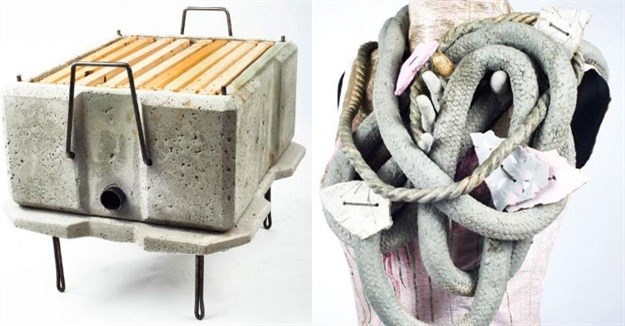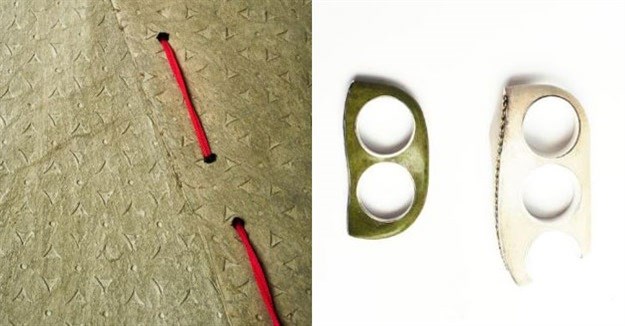#BizTrends2017: Reinventing traditional materials
From the onset of the Bronze Age, civilisation has evolved through materials technology. Our modern world is continuously being reshaped: skyscrapers are reaching new heights; ultra-lightweight cars and planes transport us; synthetic body parts help to heal us; LEDs light up our world and fiber optics connect us to the internet of things.
More than ever before, materials are seen as a priority for research and offer opportunities for innovation. They have undergone a revolution in the past century but, in many respects, this revolution is only just beginning. Less than 100 years ago, the range of materials we had available to us was limited to traditional building materials such as wood, timber, glass and concrete; various metals in fairly basic metallurgical forms; and the first plastics and ceramics.

Potential is unlimited
Today our ability to design new materials and modify existing ones is still only in its infancy. The potential is unlimited and exciting however. The possibility of influencing material composition and properties atom-by-atom creates opportunities that we are only just starting to explore; the convergence of biology, physics and chemistry is breaking down these barriers. New materials are enabling alternative methods of manufacturing that, in turn, benefit material development. Nanocomposite materials, synthetic biomaterials, ferroelectric materials and polyamides demonstrate how material science is developing beyond the limits of what once seemed impossible. Additive technologies (3D and 4D printing) are changing the way we think about materials: we’re now able to design product function, as well as form into the material itself. This is likely to lead to new types of designer materials.
What does this mean for those original “traditional” materials though? In an era being shaped by technological development, what are some of the latest discoveries in this space? And how will these continue influencing the space in 2017 and beyond?
Pushing industry boundaries
Perhaps just as exciting is how these – and new iterations of these materials – are also pushing the boundaries of the industries where they’re used, and changing the solutions space significantly. Glass technology innovation, for example, is contributing to the field of photonics and opto-electronics including LASER, solar cell, sealants and solid LED applications. In healthcare and dentistry, bioactive glass is now being used as a bone graft substitute. Ion leachable sodium fluoro-aluminosilicate glass is also being used in dental cements (glass ionomer cements). High performance glass laminates are changing energy efficiency of buildings, and new research is contributing to the development of glass yarns and fabric.

In a similar way, structurally engineered timber technology now means we can manufacture digitally manipulated cross-lamination, offering a lightweight alternative to other structural materials. Reconstituted wood, wood plastic composite materials and ultra-thin wood veneers are additionally advancing new applications for the world’s oldest known material.
In PPC’s particular space, innovation in cement manufacturing, additives and admixture technologies are creating new properties and possibilities for concrete applications – turning it into a contemporary high performance material.
PPC Imaginarium
Experience has taught us that it’s important to keep a close eye on emerging young talent in the materials field – as experimental ideas and concepts can often be made commercially relevant in the right market conditions and through industry collaboration. This was one of the objectives behind the conception of our PPC Imaginarium. Two years in the making, this sponsored platform profiles and nurtures emerging design innovation in South Africa. It additionally promotes conceptual and application experimentation in concrete as a material across six disciplines: architecture, fashion, jewellery, industrial design, sculpture and film. Not only is it a world first, but it also represents a unique approach to encouraging innovation in the materials field. The materials constituting concrete themselves are the starting point in the design process: shaping new design aesthetics, creating new products and pushing material experimentation into new realms. This is challenging how we as a materials and solutions provider consider our own market offering – and how we need to partner with our customers and clients.
Focus on innovation and opportunity
With 2017 almost upon us, perhaps the most critical take-out for anyone working in the building materials space is a relentless focus on innovation and opportunity. As materials reshape themselves into direct design solutions, we, in turn, need to create platforms that allow for experimentation and move them closer to becoming commercially available. In this way, we will truly unlock the opportunity of both traditional and non-traditional materials – finding new answers to challenges of urbanisation, housing and infrastructure, among others.
























